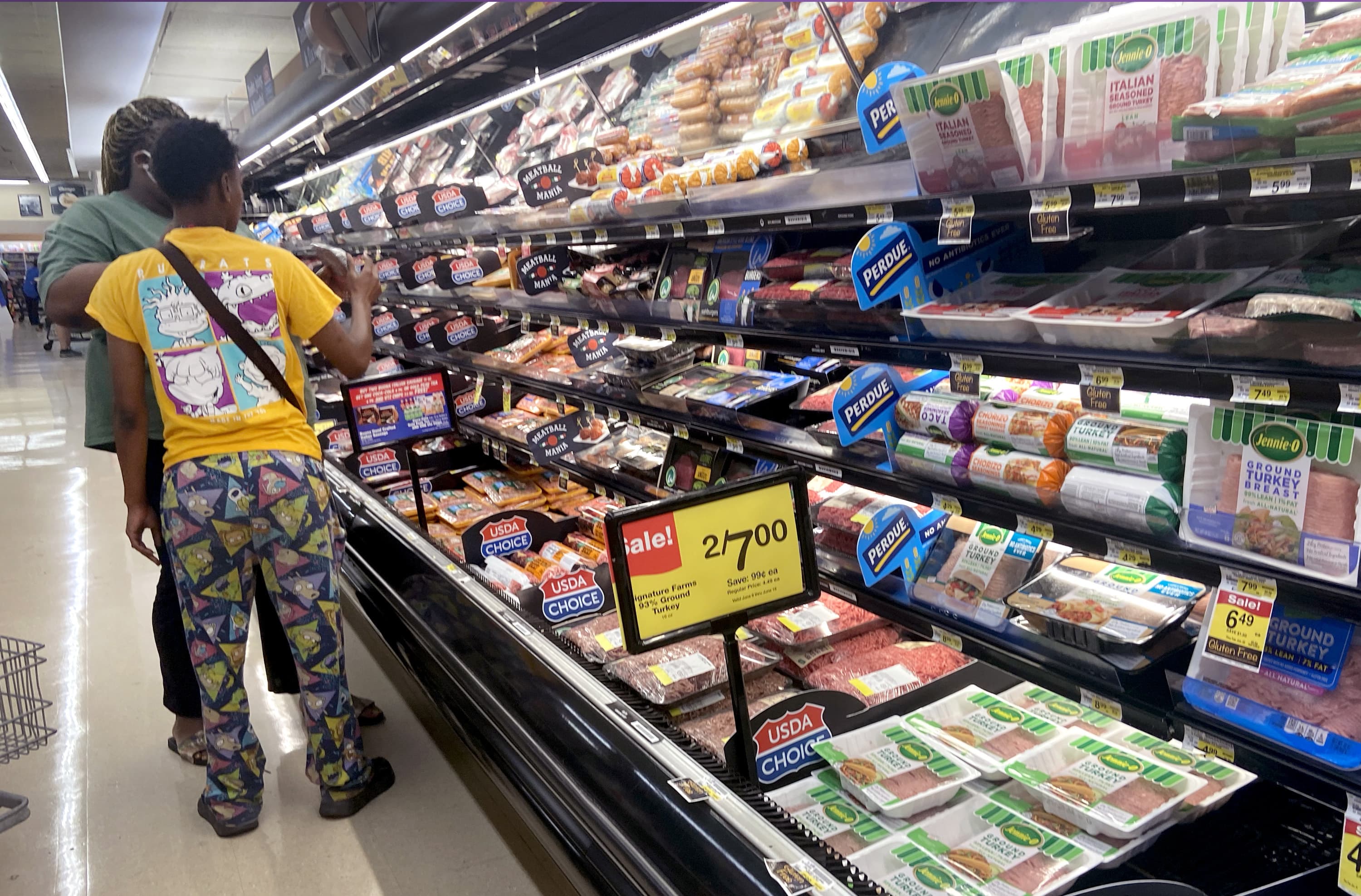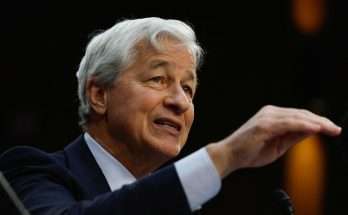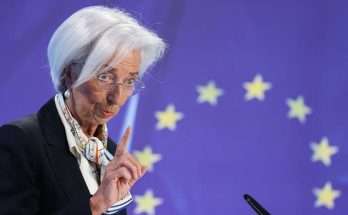
Customers shop for produce at a supermarket on June 10, 2021 in Chicago, Illinois.
Scott Olson | Getty Images
Under normal circumstances, the recent spate of high inflation numbers would be cause for high alarm.
But in the present Covid-era context, they were confirmation in some quarters that the inflation picture is doing little more than following the script, rising due to one-off bottlenecks and the product of a distorted comparison to a year-ago period that saw much of the U.S. economy in shutdown mode.
May saw another significant jump, according to the gauge that Fed officials like to cite most.
The personal consumption expenditures core index – excluding food and energy costs – rose 3.4% on a year-over-basis, in line with Wall Street expectations but also the fastest increase since April 1992.
Markets took little notice of the Friday PCE reading, pushing stocks mostly higher and government bond yields up only slightly.
That was largely because that even while the inflation data has spurred comparisons to the runaway scenario associated with the 1970s, the numbers at least for now are on the side of those expecting the trend to subside and then stabilize at lower levels.
“It was right down the strike zone,” Mark Zandi, chief economist at Moody’s Analytics, said of Friday’s Commerce Department release. The PCE level is “consistent with the idea that the surge in inflation will be transitory, that it’s related to the reopening of the economy and some of disruptions that are resulting from that quick reopening.”
In the near term, at least, that notion that inflation is going to fade at some point is of cold comfort to those who’ve gotten socked with higher costs.
Everything from airline tickets to hotel stays to the cost of buying a home has been on the rise and showing only occasional signs of letting up. A separate inflation indicator, the consumer price index, moved up 5% in May from a year ago, while the producer price index surged 6.6%, the fastest rise on record.
Widespread price increases
Consumers are paying higher costs for just about everything.
Gasoline nationally is up 20% from pre-pandemic levels and 46% from a year ago, according to the Energy Information Administration. At the grocery store, beef and pork prices are swelling, with bacon up 18.7% from a year ago, while ham is nearly 8% higher and milk prices have climbed about 9%, according to the Bureau of Labor Statistics.
Those pressures have caught the eye of Fed officials, who are watching inflation closely to determine whether and when they should exit the ultra-easy monetary policy steps they have taken during the pandemic.
Customers shop for meat at a supermarket on June 10, 2021 in Chicago, Illinois. Inflation rose 5% in the 12-month period ending in May, the biggest jump since August 2008. Food prices rose 2.2 percent for the same period.
Scott Olson | Getty Images
Atlanta Fed President Raphael Bostic said this past week inflationary pressures may be stronger and more durable than previously thought, and his counterpart in St. Louis, James Bullard, also said he’s growing concerned.
“A new risk is that inflation may surprise still further to the upside as the reopening process continues, beyond the level necessary to simply make up for past misses to the low side,” Bullard said in remarks Thursday.
“Policymakers will have to take this new risk into account in the months and quarters ahead,” he added.
The Fed likes to keep inflation around 2% but said it is willing to tolerate even higher readings if the longer-term average stays around that level and the economy has not yet achieved full and inclusive employment.
However, prolonged readings around the levels in the past two months – April’s core PCE increased 3.1% — might force the Fed’s hand. As things stand, officials have begun discussing whether to reduce the $120 billion minimum bond purchases each month, though they still aren’t ready to talk rate hikes until at least 2023.
“It’s time to start talking about how we might taper asset purchases,” San Francisco Fed President Mary Daly said in a media call. “Talking about rate changes right now isn’t even on the table.”
Talking about inflation, though, is on the table for many in corporate America. Company CEOs have devoted extensive amounts of time during earnings calls this quarter to outline how much impact inflation as had on their operations.
Restaurant chain owner Darden, which counts Olive Garden among its properties, a few days ago said its outlook for 2022 was a 3% inflation hit, with dairy and seafood costs expected to increase in high-single digits and chicken and wheat to experience mid-single digit hits.
A few weeks ago, Campbell Soup executives also said transportation costs were hitting their bottom line, though they said they expected to be able to navigate the situation.
“We did face a significant inflationary environment in the quarter as well as shorter-term increases in supply chain costs,” Campbell CEO Mark Clouse said. “We anticipated the vast majority of these drivers, but in certain areas, the pressures intensified especially around inflation and some of the transitional costs moving out of the Covid-19 environment. We are confident that we can address these issues and we have plans and pricing already in place as we exit the fiscal year and enter fiscal 2022.”
Important policy and economic implications
The stakes on inflation couldn’t be higher.
If the current trend does not follow script, the stunning economic growth of the past year could get sidetracked quickly. At the same time, the Biden administration is counting on inflation staying low, with Treasury Secretary Janet Yellen repeatedly saying that the current heavy deficit spending is being made affordable through the low-rate environment.
“We’re focused on near-term that some of these bottlenecks that have emerged get relieved and we can transition to a strong kind of full employment and post-pandemic economy as rapidly as possible,” a senior White House official said. “Ultimately, that’s going to mean a rapidly growing economy with a bigger labor force over time.”
The official, who spoke on condition of anonymity, said market pricing is responding to the idea that inflation will fade and that the current round is transitory with big numbers inflated by base effects.
Boston Fed President Eric Rosengren said in a presentation that the area of rising inflation that concerns him the most is housing, with prices rising “with a steepness that is not dissimilar to what we were experiencing in the 2005 to 2007 period. … We do have to worry about housing prices in a boom-bust scenario.”
Overall, though, he said expecting inflation to keep up around the current level is “not a particularly good forecast.”
“We may see it this year, but that will be transitory,” Rosengren said. “I think that is more relevant is looking at next year.”
Become a smarter investor with CNBC Pro.
Get stock picks, analyst calls, exclusive interviews and access to CNBC TV.
Sign up to start a free trial today.


